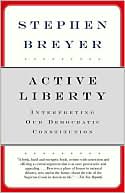Category Books
- Fiction Books & Literature
- Graphic Novels
- Horror
- Mystery & Crime
- Poetry
- Romance Books
- Science Fiction & Fantasy
- Thrillers
- Westerns
- Ages 0-2
- Ages 3-5
- Ages 6-8
- Ages 9-12
- Teens
- Children's Books
- African Americans
- Antiques & Collectibles
- Art, Architecture & Photography
- Bibles & Bible Studies
- Biography
- Business Books
- Christianity
- Computer Books & Technology Books
- Cookbooks, Food & Wine
- Crafts & Hobbies Books
- Education & Teaching
- Engineering
- Entertainment
- Foreign Languages
- Game Books
- Gay & Lesbian
- Health Books, Diet & Fitness Books
- History
- Home & Garden
- Humor Books
- Judaism & Judaica
- Law
- Medical Books
- New Age & Spirituality
- Nonfiction
- Parenting & Family
- Pets
- Philosophy
- Political Books & Current Events Books
- Psychology & Psychotherapy
- Reference
- Religion Books
- Science & Nature
- Self Improvement
- Sex & Relationships
- Social Sciences
- Sports & Adventure
- Study Guides & Test Prep
- Travel
- True Crime
- Weddings
- Women's Studies
Active Liberty: Interpreting Our Democratic Constitution »

Authors: Stephen Breyer
ISBN-13: 9780307274946, ISBN-10: 0307274942
Format: Paperback
Publisher: Knopf Doubleday Publishing Group
Date Published: October 2006
Edition: (Non-applicable)
Author Biography: Stephen Breyer
Stephen Breyer is a Justice of the Supreme Court of the United States. He is a resident of Cambridge, Massachusetts, and Washington, D.C.
Book Synopsis
A brilliant new approach to the Constitution and courts of the United States by Supreme Court Justice Stephen Breyer.
For Justice Breyer, the Constitution’s primary role is to preserve and encourage what he calls “active liberty”: citizen participation in shaping government and its laws. As this book argues, promoting active liberty requires judicial modesty and deference to Congress; it also means recognizing the changing needs and demands of the populace. Indeed, the Constitution’s lasting brilliance is that its principles may be adapted to cope with unanticipated situations, and Breyer makes a powerful case against treating it as a static guide intended for a world that is dead and gone. Using contemporary examples from federalism to privacy to affirmative action, this is a vital contribution to the ongoing debate over the role and power of our courts.
KLIATT
We live in an era when conservatives have gotten the most recent appointments to the Supreme Court, and when the most prominent public speakers and leaders within that court have generally espoused a judicial philosophy of deferring to the executive branch and some version of original intent in deciding cases. Justice Stephen Breyer's book presents an alternative vision of Constitutional interpretation. While favoring judicial modesty, Justice Breyer refuses to see the Constitution as a static guide to an ever-changing world. He first discusses his big themes and then "specific applications." His organizational structure makes it easy for students to get 10—12 idea-packed pages on such key topics as speech, federalism, privacy and affirmative action. The book is sophisticated in language but clearly written. Its size and structure make it a useful book for students trying to understand the current judicial scene and its historical context.
Table of Contents
Subjects
 Constitutional Law
Constitutional Law  U.S. Constitution
U.S. ConstitutionLaw
 General & Miscellaneous Law
General & Miscellaneous Law  Interpretation & Construction of Law
Interpretation & Construction of LawLaw
 General & Miscellaneous Law
General & Miscellaneous Law  United States Law - General & Miscellaneous
United States Law - General & MiscellaneousLaw
 Legal Theory & Philosophy
Legal Theory & Philosophy  Jurisprudence
JurisprudenceNonfiction
 Law
Law  Constitutional Law
Constitutional LawNonfiction
 Law
Law  General & Miscellaneous Law
General & Miscellaneous LawNonfiction
 Law
Law  Legal Theory & Philosophy
Legal Theory & PhilosophyPolitical Books & Current Events Books
 United States Politics
United States Politics  U.S. Politics - General & Miscellaneous
U.S. Politics - General & MiscellaneousPolitical Books & Current Events Books
 All Politics
All Politics  Political Theory & Ideology
Political Theory & IdeologyPolitical Books & Current Events Books
 All Politics
All Politics  United States Politics & Government
United States Politics & GovernmentNonfiction
 Politics & Current Affairs
Politics & Current Affairs  United States Politics
United States PoliticsNonfiction
 Politics & Current Affairs
Politics & Current Affairs  All Politics
All PoliticsPolitical Books & Current Events Books
 Law
Law  Constitutional Law
Constitutional LawPolitical Books & Current Events Books
 Law
Law  General & Miscellaneous Law
General & Miscellaneous LawPolitical Books & Current Events Books
 Law
Law  Legal Theory & Philosophy
Legal Theory & Philosophy
